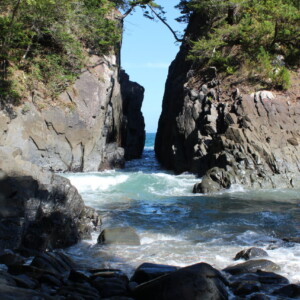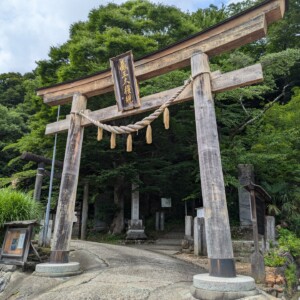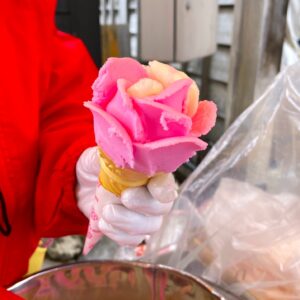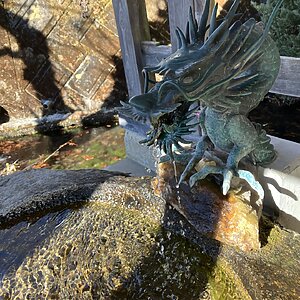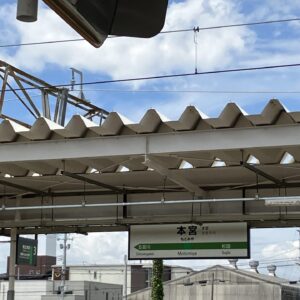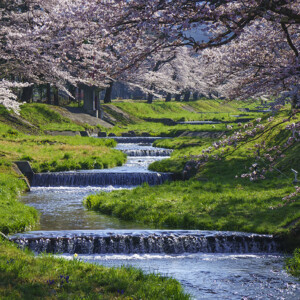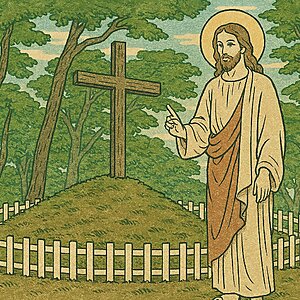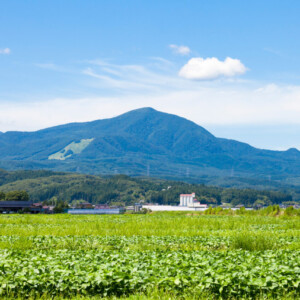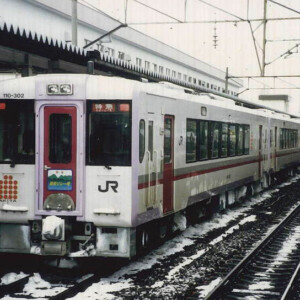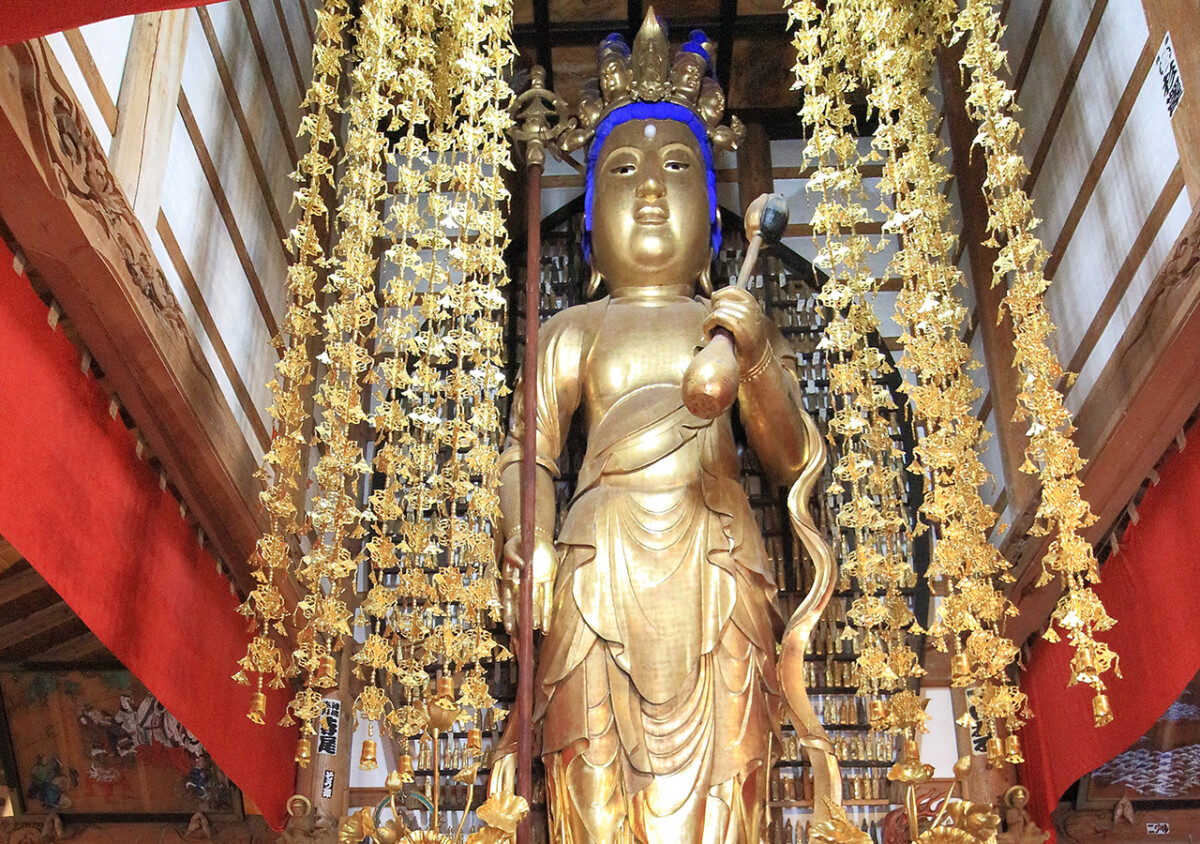
[Yurihonjo City, Akita Prefecture] Japan's three largest Hase Kannon statues are here! Great Buddha of Akada full of blessings
table of contents
Japan's three largest Hase Kannon statues are located in Yurihonjo City, located in the southern part of Akita Prefecture on the Sea of Japan side. The three major Hase Kannon statues in Japan are those at Hasedera Temple in Sakurai City, Nara, Hasedera Temple in Kamakura City, Kanagawa Prefecture, and Hasedera Temple in Yurihonjo City, Akita Prefecture.
The Chokokuji Kannon statue in Yurihonjo City is known as the Great Buddha of Akada and is widely loved by local people. You can arrive at Hasedera Temple in about 20 minutes by driving in the direction of Akada from National Route 105.
For those visiting for the first time, it is located in a rural area that makes you wonder, ``This is such a strange place.'' However, the moment everyone saw the large Kannon statue on the door of the Great Buddha Hall, they were captivated by its majesty.
This time, we will introduce the Great Buddha of Hasedera and Akada in Yurihonjo City.
Hasedera Temple and the priest Koreyama
Shobozan Hase-dera Temple in Yurihonjo City is a temple founded in 1775 by Koreyama Taikaku, a monk of the Kameda clan.
Koreyama was born as the eldest son of Chozaburo, a farmer in Akada Village. His childhood name is Daisuke. Although Korezan was a Zen monk, it is said that he secluded himself in the mountains and practiced ascetic practices like a Shugendo. He rebuilt the ruined Matsugasaki Kozenji Temple in the same area, performed many miracles such as giving medicine to the sick and using a dragon to bring rain, and received the deep devotion of the feudal lord.
He was also a great priest who provided spiritual support to farmers who suffered from repeated poor harvests and poverty.
In 1784 (Tenmei 4), the construction of the Eleven-faced Kannon statue began, with a small Buddha carved from the same tree as the main image of Hase-dera Temple in Kamakura as the inner Buddha. Two years later, the Great Kannon was completed. However, in 1888 (Meiji 21), all of the temple was destroyed by fire.
However, due to the strong faith of the people, the Kannon statue was rebuilt four years later, and the current main hall was rebuilt nine years later.
The current Great Buddha (7.878 m tall) was donated by Fujiyoshi Sasaki, who was a kimono merchant in Honjo Omachi at the time, and was restored in 1892 and rebuilt in 1896. This is where the Great Buddha Opening Eye Rakukei memorial service was held.
The Great Buddha Hall, which was rebuilt in 1893, is said to have been faithfully restored to its original style and scale, and the year of construction can be confirmed from the ridge plate.
The Great Buddha Hall is a two-story building with a total height of about 21.2 meters, said to be seven-jo. Both the upper and lower floors have giboshi koran on all four sides, and on the south side of the upper floor, there is a statue of Todaiji Temple in Nara. There is a kansomado window similar to the one in the Great Buddha Hall.
The outside has a cut edge around it, and 18 octagonal side pillars support the building. In addition, the rafters of the roof are made of fan rafters, and the interior is an atrium to enshrine the Great Buddha, and the four entrance pillars of the columns surrounding the Great Buddha support the entire Great Buddha Hall by running from the lower level to the upper level. .
The roof was originally made of wood, but was replaced with copper sheets in the 1940s.
Erecting the Great Buddha of Akada
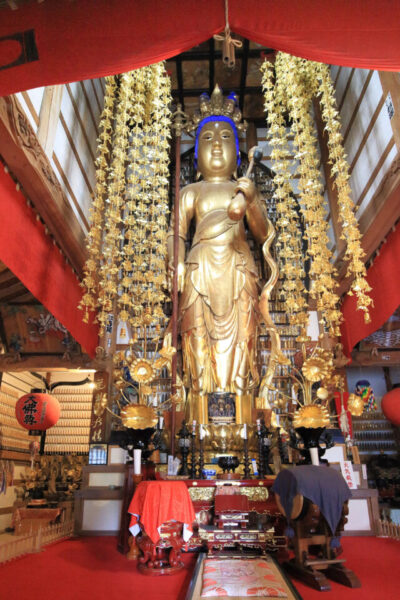
At the time when the Kannon statue was erected, there were three Kannon statues in Japan, each measuring 2 lengths and 6 feet, in Yamato, Kamakura, and Aizu. In addition to this, it is said that priest Koreyama decided to build a statue of Eleven-faced Kannon in Akada, hoping to make the country safe as one of the Four Heavenly Kings.
During the Kansei period, it became the Kameda clan's place of prayer for long life in military affairs and a good harvest for the territory, and has remained an object of deep faith for the local people for many years since then.
The golden eleven-faced Bodhisattva Avalokitesvara has 11 faces on its head and faces in all directions, representing the all-round savior. It is extremely impressive due to its height of about 9 meters.
The power of its eyes looking down from above may be scary at first, but gradually it begins to look like a gentle expression watching over us.
In his left hand, he holds an aquarium filled with 8 types of highly effective meritorious water and an uncultivated lotus representing wisdom and compassion, and in his right hand, he holds a 10m-long yōgain, which symbolizes the fulfillment of the wishes of sentient beings. I have a cane.
Great Buddha Hall full of art
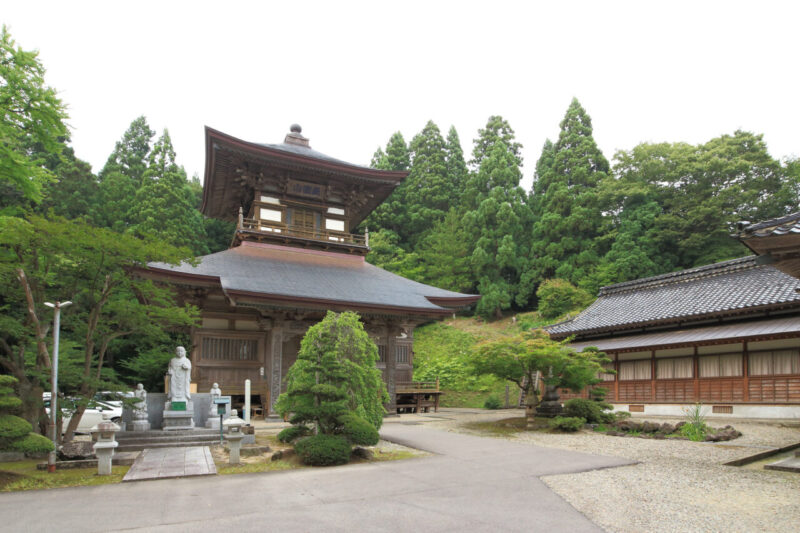
In front of the gate, many colorful flowers bloom, and as you walk up the approach, you will find yourself in the quiet precincts. There is a clean house and a reliquary hall, and in front of it, there is an eye-catching double-roofed Great Buddha Hall.
If you look closely at the exterior of the Great Buddha Hall, you will see that there are many very delicate carvings on the pillars and beams. It was carved by Matsushiro Ogawa, the most famous temple carpenter in this region during the Meiji period, and is carved with creatures such as dragons, lions, and bakus, as well as flowers such as chrysanthemums and lotuses.
When you open the front door of the Great Buddha Hall, you will find a very impressive Kannon statue. Along with the Kannon statue, the golden banners and everlasting flowers add to the gorgeousness. Beside the statue of Kannon are the statues of Fudo Myoo and Zao Gongen, and behind it are countless thousands of Buddha statues, and you will be mesmerized by their majesty.
Furthermore, the interior of the Great Buddha Hall is filled with works of art, and the ``Thirty-Six Birds'' on the ceiling above the Great Buddha was painted by Zoe Masuda, who studied under Buncho Tani and became an official painter of the Honjo clan. Furthermore, the panel painting ``Thirty-six Poems'' is the work of Hori Tobei of the Ouchi area, who was said to be a master craftsman of the Meiji period.
In addition, the calligraphy used when the temple received the Sango temple name from the Kameda feudal lord in 1795 was restored to the temple name plaque on the lower level and the mountain name plaque on the upper level during reconstruction.
Hasedera Great Buddha Hall is the only large-scale Buddhist temple in Akita Prefecture, and the date of its construction is clear from the ridge tag, so it is one of the valuable remains for understanding the structure, decoration, etc. of modern temples in Akita. It has become.
Additionally, the eleven-faced Kanzeon Bodhisattva standing statue in the hall was designated as a tangible cultural property by Yurihonjo City in 1986, and the Akada Daibutsu Festival, a festival at Hasedera Temple, was designated as an intangible cultural asset by Akita Prefecture in 1997. It has become a folk cultural property.
Benefits of the Great Buddha of Akada
Kannon is the most compassionate of all Buddhas, and with his warm heart he relieves people's suffering and brings them joy. It is a good idea to put your palms together in front of the Buddha and recite Kannon's Daimoku ``Namu Kanzeon Bodhisattva'' (Namu Kanzeon Bodhisattva).
Kannon's Daimoku means ``I take refuge in Kannon's teachings,'' and by drawing out the Buddha's nature from one's inner being, it has the effect of removing anxiety, steering away from crisis, and leading to peace of mind.
In other words, it accepts all our wishes. When you are anxious or have nothing to pray for, visit the shrine and have your wishes come true. In other words, there is a universal benefit that can solve each problem.
Please come and see it once.
INFORMATION
- Name: Shobozan Hasedera Temple
- Address: 115 Akada Ueda Omote, Yurihonjo City, Akita Prefecture
- Cultural properties: Great Buddha Hall (registered tangible cultural property of the country), Horyu-ji Temple Sutra (tangible cultural property of the prefecture)



![[Chokaisan and Tobishima Geopark: Yusa and Sakata Edition] Shonai Hirano is moist with the blessings of Mt. Chokaisan b5339749745ac9c7a01a8bb8dc81755e](https://jp.neft.asia/wp-content/uploads/2023/05/b5339749745ac9c7a01a8bb8dc81755e-150x150.jpg)
!["Honkai Lion Dance Banraku" is a folk entertainment that has been handed down for 400 years [Yurihonjo City, Akita Prefecture] 5 Great Sea Lion Dance](https://jp.neft.asia/wp-content/uploads/2025/03/0215ff7aa0e94eddc6dff8713d12e83b-150x150.jpg)
